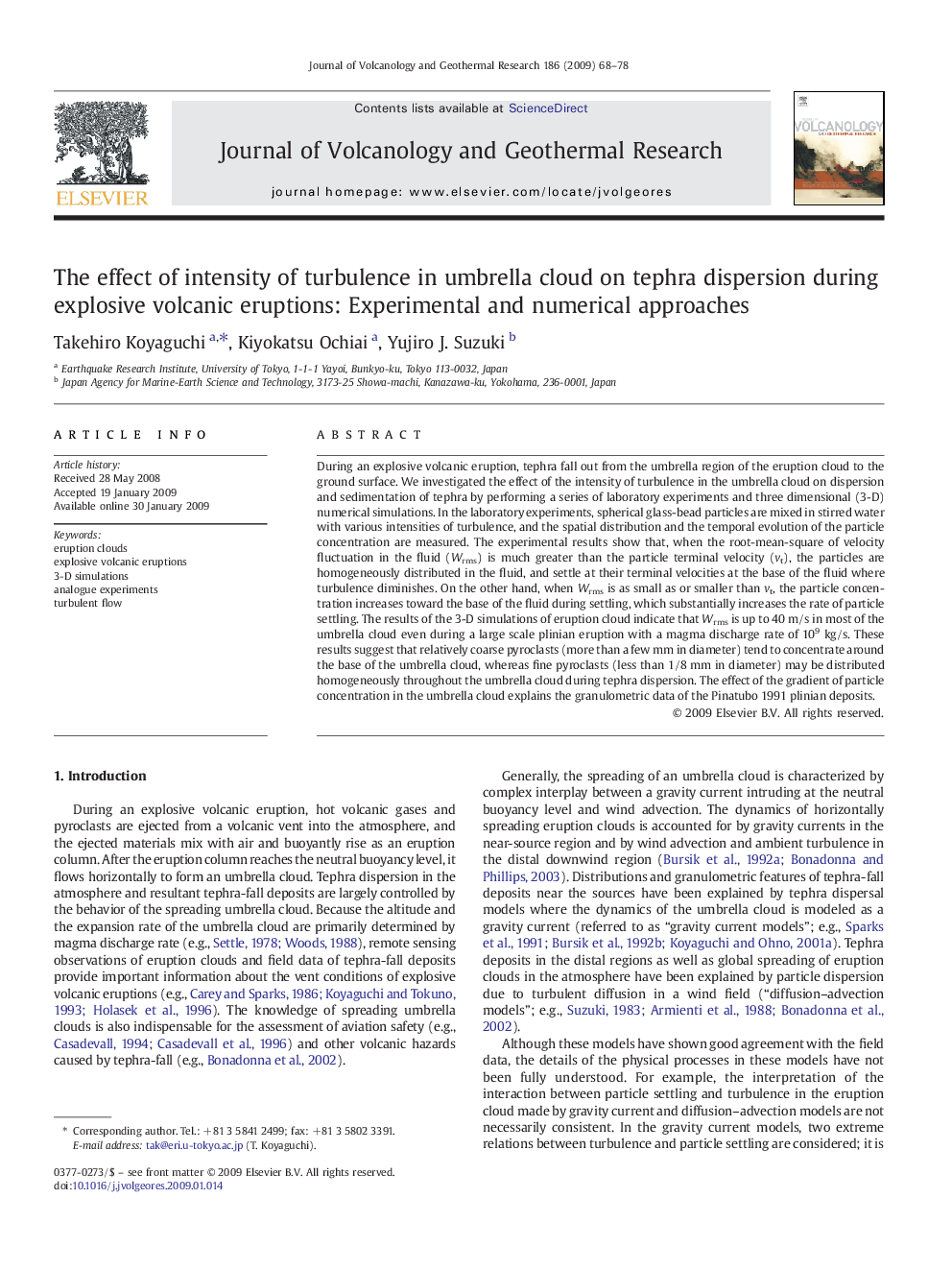| Article ID | Journal | Published Year | Pages | File Type |
|---|---|---|---|---|
| 4713217 | Journal of Volcanology and Geothermal Research | 2009 | 11 Pages |
During an explosive volcanic eruption, tephra fall out from the umbrella region of the eruption cloud to the ground surface. We investigated the effect of the intensity of turbulence in the umbrella cloud on dispersion and sedimentation of tephra by performing a series of laboratory experiments and three dimensional (3-D) numerical simulations. In the laboratory experiments, spherical glass-bead particles are mixed in stirred water with various intensities of turbulence, and the spatial distribution and the temporal evolution of the particle concentration are measured. The experimental results show that, when the root-mean-square of velocity fluctuation in the fluid (Wrms) is much greater than the particle terminal velocity (vt), the particles are homogeneously distributed in the fluid, and settle at their terminal velocities at the base of the fluid where turbulence diminishes. On the other hand, when Wrms is as small as or smaller than vt, the particle concentration increases toward the base of the fluid during settling, which substantially increases the rate of particle settling. The results of the 3-D simulations of eruption cloud indicate that Wrms is up to 40 m/s in most of the umbrella cloud even during a large scale plinian eruption with a magma discharge rate of 109 kg/s. These results suggest that relatively coarse pyroclasts (more than a few mm in diameter) tend to concentrate around the base of the umbrella cloud, whereas fine pyroclasts (less than 1/8 mm in diameter) may be distributed homogeneously throughout the umbrella cloud during tephra dispersion. The effect of the gradient of particle concentration in the umbrella cloud explains the granulometric data of the Pinatubo 1991 plinian deposits.
